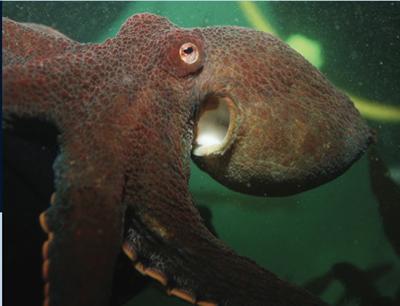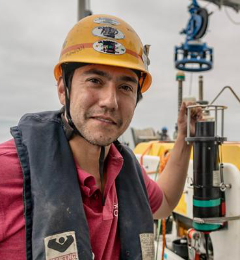Brief description
We develop underwater robotic vehicles inspired by swimming animals; increasing their speed and agility, while making them safer to operate in delicate ocean environments.
.png_SIA_JPG_fit_to_width_INLINE.jpg)
Explore this case study


The challenge
Exploring, developing, and protecting our ocean resources is an important goal of the 21st century; from nurturing bleached coral reefs to exploring ancient shipwrecks and from surveying floating wind farms to monitoring submerged fish farms. However, our current scientific and industrial ocean vehicles are extremely limited in either their mobility or mission life, and their hard metal shells and fast spinning propellers can be dangerous in sensitive areas.
As such, achieving our goals for the oceans requires new underwater robots capable of safely and effectively interacting with their environment. The University of Southampton has taken inspiration from ocean animals themselves to develop these new technologies, studying the benefits and limits of animal-like propulsion and soft-body robotics, and translating this understanding to the design of world-class underwater robotic vehicles.
What we do
In contrast to engineered vehicles, animals swim by changing their body shape. This flexibility is the key to their efficient and agile swimming, but it requires completely rethinking standard engineering concepts and design principles. Using both simulations and experiments, we have uncovered the physics of effective unsteady swimming in a variety of forms and applied these to develop new underwater robotic vehicles.
When studying the swimming of the ancient plesiosaur, we uncovered the importance of the spacing and timing of the second set of flippers used by these extinct marine reptiles. When properly designed, the second set of flippers not only doubles the propulsive force, but nearly triples it. The tandem flipper system is also more efficient, and we used this concept to design an inexpensive and manoeuvrable four-flippered underwater vehicle. Link to an interview on this vehicle.
In another study, we determined how animals like the octopus can jet away at such high speed without any rigid skeleton to support them; they push and pull on the water as they shrink in size to give them an extra burst of acceleration. Using this we designed a Guinness World Record winning underwater rocket, powered by a simple party balloon.
Finally, we can combine the advantages of shape changing propulsion with other engineering disciplines such as resonance and soft-robotics. Large vibrations are typically something to avoid in engineering, but by ‘tuning’ a soft robot to have a preferred vibration rate we can maximise the swimming motion with minimal energy cost. Our vehicle, pulse-8, was found to match the most efficient swimmer in nature, the jellyfish, even at its fastest swimming speed.
Our impact
This research project has resulted in numerous funded grants for research staff, students and experiments. Our scientific achievements have been recognised in world leading academic journals with thousands of views and downloads. Our biological-inspired robots have generated huge public interest in underwater research, with dozens of popular news articles around the world and hundreds of thousands of views online. The technologies are being actively pursued by commercial industry and will offer a step-change in the way we interact with the ocean in the future.
The facilities we used and partners we work with
Experiments have been carried out in our large towing tank and circulating water channels at the University of Southampton, as well as facilities with our collaborators at the Massachusetts Institute of Technology (MIT).
Key Publications and media
"A resonant squid-inspired robot unlocks biological propulsive efficiency " by Bujard, Giorgio-Serchi and Weymouth, published in Science Robotics. Paper, video.
“Ultra-fast escape maneuver of an octopus-inspired robot” by Weymouth, Subramaniam, and Triantafyllou, published in Bioinspiration and Biomimetics. Paper, video, video
“The four-flipper swimming method of plesiosaurs enabled efficient and effective locomotion” by Muscutt, Dyke, Weymouth, Naish, Palmer, Ganapathisubramani, published in Proceedings of the Royal Society B. Paper, video.
Related Staff Member
Related Staff Member
Related Staff Member
Related Staff Member
Students
Luke Muscutt
Thierry Bujard
Leo Micklem



